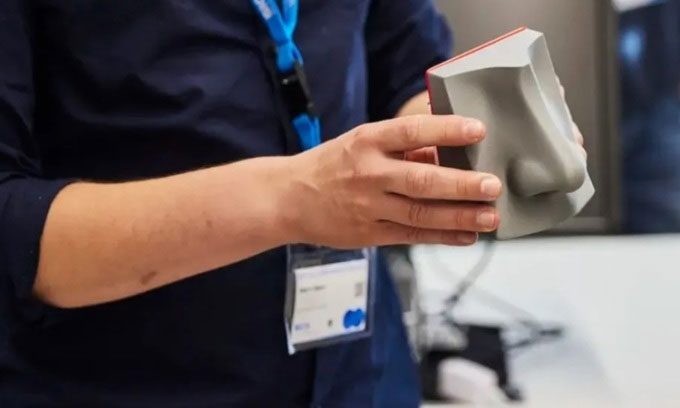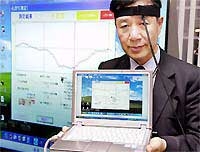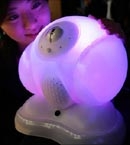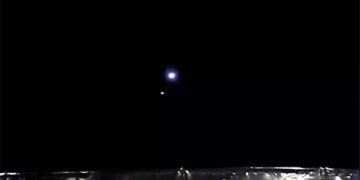Electronic noses powered by sensors and AI technology can detect contaminated food and assess its freshness.
The human nose has around 400 olfactory receptors capable of detecting approximately one trillion different scents. Mimicking such sensitivity in scientific devices presents a significant challenge. However, recent advancements in artificial intelligence (AI) are rapidly improving the speed and accuracy of the latest electronic noses (high-tech sensors that can identify and report specific odors), thereby enhancing food safety, according to BBC.

Sensors from NTT mounted on a 3D printed electronic nose. (Photo: NTT)
Many types of bacteria found in food, such as Salmonella and E. coli, can be deadly. Both bacteria have unique “electronic signatures”, according to Raz Jelinek, co-developer of an electronic nose called Sensifi and a professor of chemistry at Ben Gurion University in Negev, Israel. “They have their own electronic signals.”
The Sensifi electronic nose, developed by the Israeli company of the same name, contains electrodes coated with carbon nanoparticles. These detect odors or volatile organic compounds (VOCs) emitted by bacteria. Different strains of bacteria produce distinct VOC signatures, generating unique electronic signals in the Sensifi device. This information is then processed by the AI software, cross-referenced with a database, and reported to the user.
Sensifi, founded earlier this year, aims to revolutionize the fight against bacterial contamination in the food industry. According to CEO Modi Peled, food manufacturers currently have to send samples to laboratories for testing, waiting days for results. In contrast, the Sensifi electronic nose can be used on-site by food companies, providing results in less than an hour at a low cost.
NTT Data Business Solutions from Germany has developed a new solution for training AI systems to operate the electronic nose they are developing. In one experiment, technicians spent three days placing instant coffee next to the AI sensor. The AI then had to identify one of three options: good coffee, bad coffee, or no coffee.
The NTT sensor is mounted on a 3D-printed plastic model of a human nose. The company trains the AI using coffee and various other foods, allowing it to recognize odors when the food and beverages are fresh. According to the company, the electronic nose can not only detect contaminated food but also assess its freshness. This capability will help supermarkets or cafés know which items need to be sold first.
In New Zealand, a company named Scentian Bio mimics insect antennae to develop “bio-sensors.” They simulate insect proteins and integrate them into their olfactory sensors. Andrew Kralicek, founder and CTO of the company, stated that the result of this biotechnology is that their sensors are “thousands of times more sensitive than a dog’s nose.”
“We can use bio-sensor technology everywhere, in food and quality control, detecting pathogens in food, non-invasive rapid disease diagnosis, sustainable agriculture, and environmental monitoring,” Kralicek said.
Food poisoning remains a serious issue worldwide. In the United States, 48 million people fall ill each year due to food-related illnesses. Among them, 128,000 are hospitalized, and 3,000 die. In the UK, it is estimated that there are 2.4 million cases of food poisoning each year, resulting in approximately 180 deaths.




















































